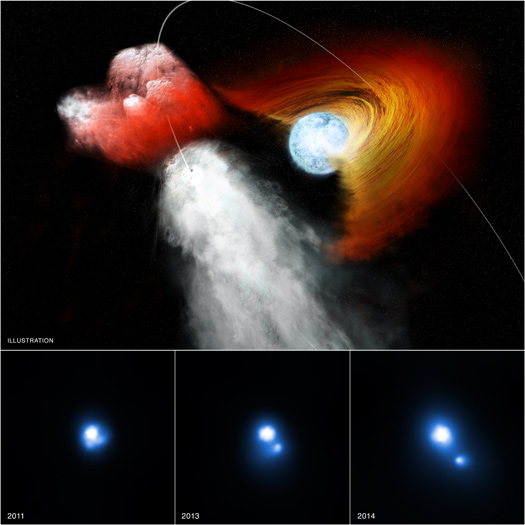Pulsar Punches Hole In Stellar Disk

This trio of images contains evidence from NASA's Chandra X-ray Observatory that a clump of stellar material has been jettisoned away from a double star system at incredibly high speeds. This system, known as PSR B1259-63/LS 2883 – or B1259 for short – is comprised of two objects in orbit around one another. The first is a star about 30 times as massive as the Sun that has a disk of material swirling around it. The other is a pulsar, an ultra-dense neutron star left behind when an even more massive star underwent a supernova explosion.
Researchers think that the pulsar knocked out the chunk of debris, which spans over a hundred times the size of the Solar System, when it collided with the disk around the massive star while traveling in its elliptical orbit lasting 41 months. (An artist's illustration shows the pulsar just after having collided with the disk.) Astronomers came to this conclusion after analyzing three separate Chandra observations taken between December 2011 and February 2014, as labeled in the three images. The bright source in the center of these images is the binary system, while the smaller point-like source to the lower right seen in the second two observations is the clump that has been dislodged.
The Chandra observations also suggest that the clump is not only moving quickly but may, in fact, be picking up speed. The average of the three observations shows the clump is moving about 7% the speed of light, but the data suggest it may have accelerated to 15% the speed of light between the second and third observations. This acceleration could be due to intense winds flowing off of the pulsar's surface at nearly the speed of light, which are caused by its rapid rotation and strong magnetic fields.
More information at http://chandra.harvard.edu/photo/2015/psrb1259/index.html
-Megan Watzke, CXC
Category:
- Log in to post comments
